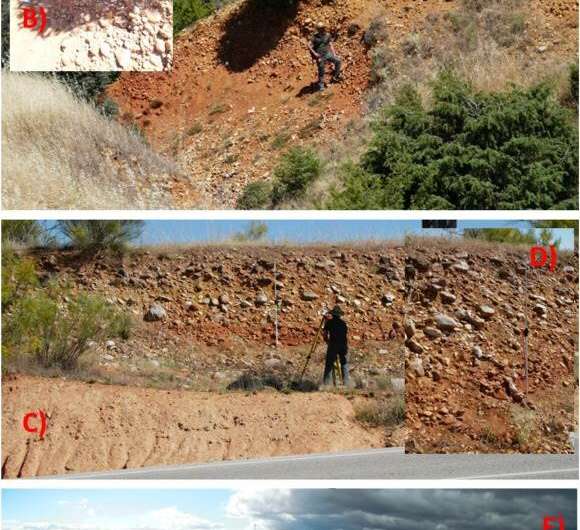Scientists investigate the origin of the Quaternary valleys in the Iberian peninsula

Geologists at the Centro Nacional de Investigaci贸n sobre la Evoluci贸n Humana (CENIEH) contributed to a study published recently in the journal Global and Planetary Change exploring one of the geomorphological paradigms of the Iberian Peninsula: the origin and chronology of the earliest Quaternary valleys. The researchers reconstructed the first drainage networks to the north of the Tagus river depression.
This work will aid in understanding the complete history of the rivers in the interior of the Peninsula and their relationships with Quaternary climate change, which will allow modeling their evolution and reconstructing the landscapes inhabited by humans during that period.
In the valley of the Jarama river (Madrid), the oldest fluvial terraces have been dated to over 2 million years old, related to the formation of the earliest valleys which drained into the ocean, coinciding with the first Quaternary glaciations, known as Biber.
Geomorphological data have been combined with numerical datings using cosmogenic isotopes and magnetostratigraphic sequences to investigate the transition in the Tagus basin, from when it was a closed, sedimentary basin until it opened up to the Atlantic Ocean and the valleys of the Tagus, and its main tributaries began to form.
"This transition took place 6.4 million years ago, at which time, the topmost deposits of the basin were formed, and this is the moment when the basin opened up to the ocean through erosion," explains geologist Alfonso Benito Calvo, responsible for the line of research into Geomorphology and Formation Processes at the CENIEH.
More information: Theodoros Karampaglidis et al. Pliocene endorheic-exhoreic drainage transition of the Cenozoic Madrid Basin (Central Spain), Global and Planetary Change (2020).
Provided by CENIEH





















